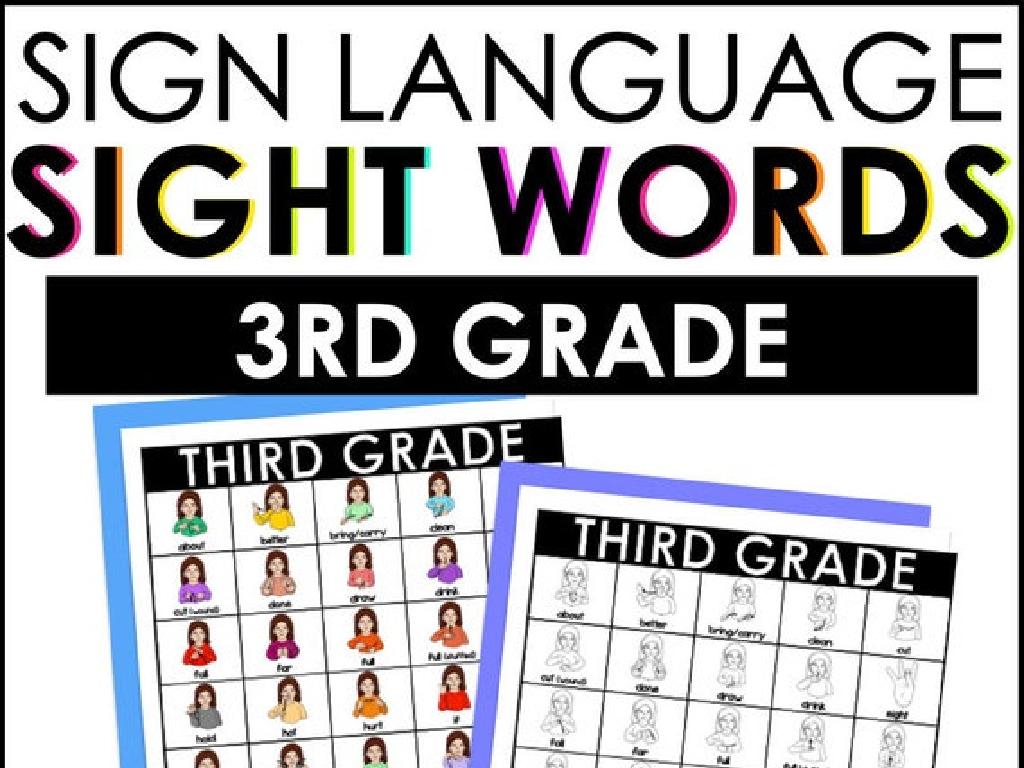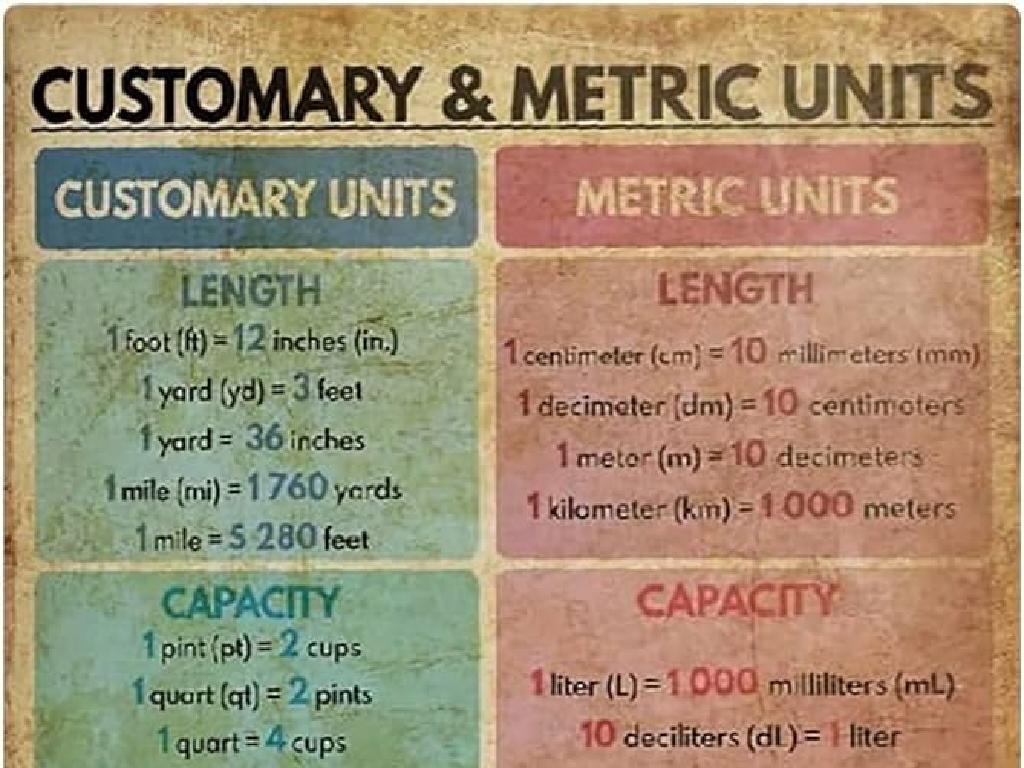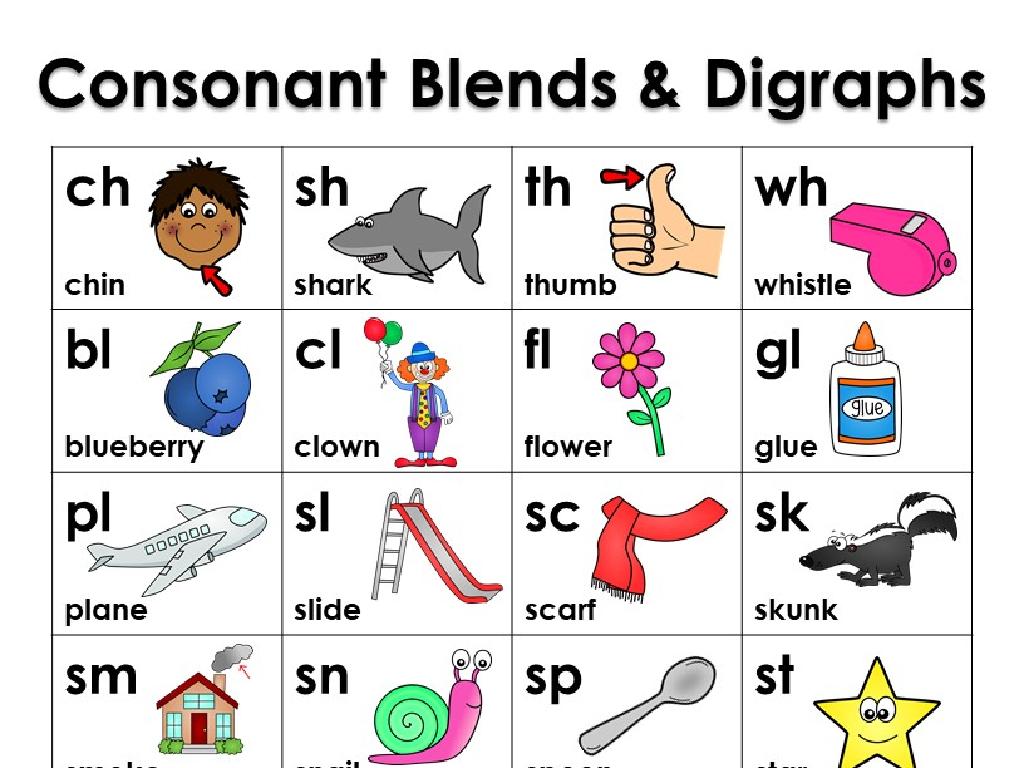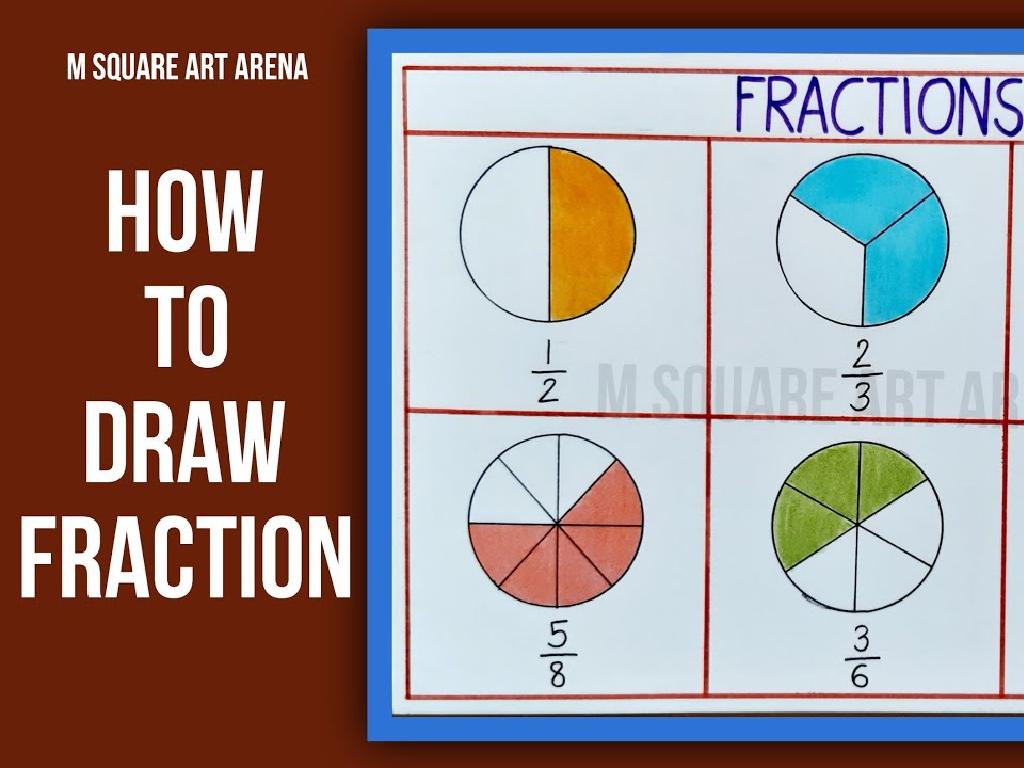Label Earth Layers
Subject: Science
Grade: Seventh grade
Topic: Earth'S Features
Please LOG IN to download the presentation. Access is available to registered users only.
View More Content
Exploring Earth’s Layers
– Earth’s features overview
– Concept of Earth’s layers
– Earth is composed of distinct layers, each with unique properties.
– Significance of studying layers
– Knowledge of Earth’s layers helps in understanding earthquakes, volcanoes, and more.
– Earth’s layers and us
– Studying layers gives insight into Earth’s past and resource distribution.
|
This slide introduces students to the fascinating world of Earth’s layers and their significance. Begin with a brief overview of Earth’s features, setting the stage for the concept of layers. Explain that the Earth is like a giant puzzle with pieces that fit together, each layer playing a crucial role in the planet’s structure and function. Emphasize the importance of studying these layers, as it helps us understand natural phenomena like earthquakes and volcanic activity, and also provides valuable information about Earth’s history and the location of natural resources. Encourage students to think about how the knowledge of Earth’s layers affects our daily lives, from the ground we walk on to the resources we use.
What Makes Up Our Earth?
– Earth: More than solid rock
– Each layer: Unique properties
– Layers differ in elements, temperature, and physical state
– Overview: Crust and Mantle
– Crust: Thin, solid; Mantle: Thick, semi-solid
– Core: Outer and Inner
– Outer Core: Liquid iron & nickel; Inner Core: Solid due to pressure
|
This slide introduces students to the concept that Earth is composed of distinct layers, each with unique characteristics. The crust is the outermost layer, relatively thin and solid. The mantle beneath is much thicker and behaves like a solid that flows very slowly. The outer core is the only liquid layer, primarily made of iron and nickel, which creates Earth’s magnetic field. The inner core is solid, despite its high temperature, due to the immense pressure at Earth’s center. Use this slide to explain that these layers are defined by differences in composition, state of matter, and physical properties. Encourage students to think about how these layers interact with each other and the surface environment.
The Crust: Earth’s Outer Skin
– Earth’s outermost layer
– Home to continents and oceans
– Varied thickness and composition
– Continental crust is thicker, while oceanic crust is thinner
– Composed of rocks and minerals
– Made up of elements like oxygen, silicon, aluminum
|
The crust is the Earth’s outermost layer and is the one we are most familiar with because it’s where we live. It includes all of the continents and the ocean floor. The crust varies in thickness from about 5 km (under the oceans) to up to 70 km (under the continents). It’s made up of a variety of rocks and minerals, predominantly containing elements such as oxygen, silicon, and aluminum. When discussing the crust with students, emphasize its solid nature and contrast it with the more fluid layers beneath. Encourage students to think about how the crust supports life and the importance of its resources.
The Mantle: Earth’s Layer of Hot Rock
– The Mantle lies beneath the crust
– Composed of semi-solid, slow-moving rock
– The rock is solid but can flow like a thick syrup
– Heat in the mantle creates convection currents
– These currents drive the movement of tectonic plates
– Convection affects Earth’s surface
– This movement can lead to earthquakes and volcanic activity
|
The mantle is a crucial layer of the Earth, located right beneath the crust. It’s made up of semi-solid rock that isn’t completely rigid, allowing it to flow very slowly. This movement is due to the heat deep within the Earth, which causes convection currents. These currents are responsible for the movement of tectonic plates on the Earth’s surface, leading to significant geological events such as earthquakes and volcanic eruptions. When discussing the mantle with students, emphasize the connection between the heat-driven convection currents and the dynamic nature of Earth’s geology.
Core of the Earth: Outer and Inner Core
– Earth’s Core: Two distinct parts
– Composed of the Outer Core and the Inner Core
– Outer Core: A liquid metal layer
– Comprised of molten iron and nickel
– Inner Core: A solid metal sphere
– Primarily iron, withstands extreme pressures
– Outer Core’s motion generates magnetism
– The flow of liquid metal creates Earth’s magnetic field
|
This slide introduces students to the structure of Earth’s core, which is divided into the Outer Core and the Inner Core. The Outer Core is a layer of liquid metal made of iron and nickel, which is crucial for understanding the geodynamo effect that generates Earth’s magnetic field. The Inner Core is a solid sphere, also composed mainly of iron, and its solidity is due to the immense pressure at the center of the Earth. Discuss how the movement of the liquid Outer Core against the solid Inner Core contributes to the creation of the magnetic field, which is vital for protecting the planet from solar radiation and for navigation. Encourage students to think about how these layers, though unseen, play a critical role in life on Earth’s surface.
Labeling Earth’s Layers
– Identify Earth’s layers
– Earth is composed of the crust, mantle, outer core, and inner core.
– Characteristics of each layer
– The crust is thin and solid, the mantle is thick and semi-solid, the outer core is liquid, and the inner core is solid due to immense pressure.
– Interactive board labeling
– Invite students to label a diagram of the Earth on the board, reinforcing their learning.
– Discuss layer significance
– Understanding Earth’s layers helps explain geological phenomena like earthquakes and volcanic activity.
|
This slide is designed to introduce students to the structure of the Earth. Begin with a brief explanation of the four main layers: the crust, mantle, outer core, and inner core. Highlight the unique characteristics of each layer, such as composition, state of matter, and temperature. Use an interactive activity where students come up to the board to label the layers on a diagram, which will help them visualize and remember the information. Discuss why it’s important to understand the Earth’s layers, relating them to real-world events and phenomena that they may be familiar with. This activity will engage students and provide a hands-on learning experience.
Earth Layers Comparison: A Peachy Analogy
– Compare Earth’s layers to a peach
– Just like a peach has skin, flesh, and a pit, Earth has crust, mantle, and core.
– Grasp the scale of Earth’s layers
– The crust is like the peach skin, very thin compared to other layers.
– Visualize layer thickness
– Imagine the mantle as the flesh, much thicker, and the core as the pit.
– Real-life examples of layer composition
– The crust is like the tarmac on a road, the mantle like the concrete beneath, and the core like the Earth’s engine.
|
This slide aims to help students understand the structure of Earth by comparing it to a familiar object: a peach. The comparison should make it easier for them to visualize the relative sizes and characteristics of the Earth’s layers. Emphasize the thinness of the crust compared to the other layers, and use relatable examples to illustrate the composition and thickness of each layer. For instance, the crust can be likened to the thin layer of tarmac on a road, while the mantle beneath is like the thick concrete foundation, and the core is the central part that drives the planet’s dynamics, similar to an engine. Encourage students to think of other examples that could represent the layers of the Earth.
Class Activity: Model Earth’s Layers
– Create a clay Earth model
– Assign colors to layers
– Crust (brown), Mantle (red), Outer core (orange), Inner core (yellow)
– Share and explain your model
– Describe the layers’ thickness, composition, and state of matter
– Discuss the layer properties
– Talk about temperature, pressure, and material differences
|
This hands-on activity is designed to help students visualize and understand the structure of Earth’s layers. Provide different colors of clay or playdough for students to create their models. Each student will choose a color for each layer: crust, mantle, outer core, and inner core. After completing their models, students will present them to the class, explaining the significance of each layer, including its thickness, composition, and state of matter. Encourage students to discuss how temperature and pressure change as we move from the crust to the core. Possible variations of the activity could include using different materials to represent the layers’ states (e.g., solid vs. liquid) or creating a cross-section model to show the layers internally.
Quiz Time: Earth’s Layers
– Identify Earth’s layers
– Match layers to properties
– Match crust, mantle, outer core, inner core with their characteristics
– Class discussion on answers
– Discuss why certain properties are associated with specific layers
– Understanding Earth’s structure
|
This slide is designed to engage students in a quiz format to reinforce their knowledge of Earth’s layers. Start by asking students to identify the different layers: crust, mantle, outer core, and inner core. Then, challenge them to match each layer with its correct properties, such as composition, state of matter, and temperature. After the matching activity, facilitate a class discussion to go over the answers and ensure understanding. Encourage students to explain their reasoning for their matches, fostering a deeper comprehension of Earth’s structure. This interactive approach helps solidify the concepts in a memorable way.
Understanding Earth’s Layers: Recap & Significance
– Recap Earth’s layer structure
– Crust, Mantle, Outer Core, Inner Core
– Significance of Earth’s structure
– Knowledge of Earth’s structure helps us understand earthquakes, volcanoes, and more
– Earth’s layers and geological phenomena
– How do Earth’s layers contribute to earthquakes and volcanic eruptions?
– Preview of the next lesson
|
As we conclude today’s lesson, we’ve learned about the different layers of Earth: the crust, mantle, outer core, and inner core. Understanding these layers is crucial for comprehending various geological phenomena such as earthquakes and volcanic eruptions. By studying the structure of our planet, we can better predict and prepare for these natural events. In our next lesson, we’ll explore how the movement and interaction of Earth’s layers lead to these geological phenomena, providing a practical application of the knowledge we’ve gained today. Encourage students to review their notes and come prepared with questions for a deeper dive into the subject.






